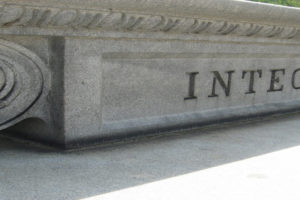This month’s article could quickly turn into a rant. So I think it is time I talk about the Financial Services industry and how it sometimes fails to serve its clients. Before I go into that, I want to acknowledge that the industry has plenty of terrific, thoughtful, and hard-working people. I have experienced it first-hand after being in it 20 years and serving on the local and state boards of the Financial Planning Association. There are a few bad actors and some blame goes to the industry itself and significant players in the industry. Today Schwab announced they are lowering their trading costs to zero. Many are following suit, including TD Ameritrade whom we currently use as our custodian for client assets. While this is great, and I salute this decision, whether our clients pay $8 or $4 or zero will not meaningfully impact their ability to reach their goals. Zero is cheaper and when you buy a stock or an ETF (exchange-traded fund) at $8 or $0 and hold that asset for a reasonable length of time (something between a year and forever) the trading costs will not have much impact on your total return. What will? Two main costs rarely get talked about. Your cost of funds and what you pay to acquire those investments. The trading costs are minuscule compared to both those costs. So, what are those costs, and how do I identify them? Herein lies one of the areas I think we as an industry can improve on. Let’s break them down here.
Cost of Funds
The cost of funds is what you pay for your mutual fund or ETF on an ongoing basis, and it is sometimes hard to find. If you buy a stock, Microsoft for example, there is no ongoing cost, zero. You will pay a slight spread between what Schwab, for instance, paid and what you paid. This is how Schwab, Fidelity, TD Ameritrade, and every other investment firm make money. This cost, if you are holding the stock for an extended period of time, is relatively minuscule.
If you buy an ETF you will likely pay a small ongoing fee. Currently SPY, a very popular ETF that tracks the S&P 500, costs 0.12% or $12 per $10,000, per year. Some ETFs are higher, but most are under 0.50% (1/2 of 1%).
Mutual funds tend to be higher and generally costs between ½ of 1% up to 2% or higher. Average costs, according to the Investment Company Institute, is 1.37% (Investment Company Institute, 2014). If you invested $10,000 in the average mutual fund, you would pay $137 per year. If you chose to use an ETF (SPY in this case) instead of a mutual fund for a $10,000 investment, you would save $125 per year. This does not mean that mutual funds are not worth the extra cost, some are. If the mutual fund outperforms the ETF, your return may be higher.
Costs of Advice and Acquisition Costs
How you acquire your investments is probably more important than whether you invest in a stock, a mutual fund, or an ETF. If you purchase your investments by yourself and use a discount broker, your acquisition costs may be very low indeed. If you use an advisor, the costs vary widely. Advisors who manage investments for a fee typically charge between 1% to 2%. Some are lower, but most fall in this range. There has been much interest in so-called Robo Advisors, but even those charge anywhere between 0.25 and 0.89%. If you use an average fee-based advisor and they keep the costs of funds low, your total costs should fall between 1.5% and 2%, though many costs are as much as 3% combined. For example, if you invest $100,000 with a fee-based advisor (it is hard to find one that will open an account for less), you will likely be paying $1,500- $2,000 per year. Here is where it gets interesting. Some investors do not have $100,000 to start out, and many of those that do still pay much more than the above. There are two ways brokers or investment advisors make a lot more than the above. Advisors, and I use that term very loosely here, may charge you a sales charge or loads. These upfront charges can be 5% or higher on top of relatively high ongoing costs of funds. So, if you go into a bank, for example, and the broker puts you in a mutual fund with a load, only 95 cents on a dollar will actually be invested with the bank pocketing the rest. You would never allow that you say! There are ways of hiding the upfront cost by charging a much higher ongoing fee for the fund without the up-front charge. You won’t see it because it comes right off the top, and the mutual fund company will advance the advisor the full commission. If you keep the fund a long time, you could end up paying 2% of your return every year, and you won’t get ongoing help.
This brings me to my most disliked form of compensation. Annuities with massive commissions to the salesperson that regularly exceed 7%. The commissions are paid to the advisor all at once with zero incentive to help you after the sale. If you go into a bank or an insurance company and meet up with one of these salespeople and you decide to invest $100,000, they will likely make a commission of $7,000, and they will earn it on this month’s paycheck leaving them with no incentive to take your calls or provide ongoing support. There are other investment products that are structured this way, but annuities are the most common. They are the most common source of customer complaints as they are complicated and difficult to understand both for the client and the salesperson. There is much more to share about these types of products and my dislike of them. I may cover it in other newsletters. I also think there is room for an article about how to choose an advisor to work with but for now here are the top 3 tips
- Go with someone who has been in the industry for more than ten years. It would be best if your advisor had gone through a few bear markets.
- Look for credentials. That tells me they are committed to ongoing training.
- Look them up on Broker Check and look for their education, their time in the industry, and any disclosures like customer complaints.
Lastly, let me know if this was helpful and if you’d like further articles on the topic.
I have also provided some further reading materials on the subject:
2014 Investment Company Factbook
Understanding Mutual Fund Costs
Interesting article on trading costs quoting Evelyn Zohlen, CFP, the national president of the Financial Planning Association.
The information provided is for guidance and informational purposes only. The articles are not the opinions of ProCore Advisors, LLC





